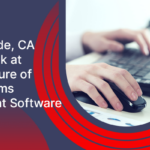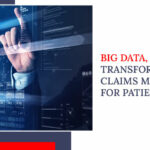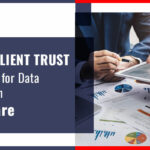Riverside, CA: A Look at the Future of Claims Management Software in 2024
July 25, 2024
In the connected world of technology and insurance, protecting sensitive health information is not merely a priority; it is an absolute necessity. With the ongoing adoption of digital transformation in the insurance sector, the utilization of claims software solutions has become crucial for optimizing operations and increasing productivity. Nevertheless, the continuous advancement of technology necessitates the implementation of strong cybersecurity protocols to safeguard critical health data against constantly changing cyber risks.
The Growing Significance of Cybersecurity in Insurance
The insurance industry is ripe for cyberattacks due to the widespread use of online payment systems and the digitalization of medical information. The dark web values health data highly since it contains a plethora of individually identifying information. Therefore, to reduce risks and gain policyholder confidence, insurance firms must prioritize cybersecurity.
The Vulnerabilities in Claims Software
Claims management software solutions play an essential part in the insurance process as they manage huge amounts of sensitive data throughout the entire claims lifecycle. These systems oversee financial transactions and patient information, as well as medical histories. Software vulnerabilities, which serve as the foundation for streamlined claims processing, can subject insurers to a wide array of cyber threats, including but not limited to ransomware and data breaches.
- Data Breach and Privacy Issues: Data breaches pose a significant risk to insurance businesses because they can ruin their brand and cause financial losses. To safeguard health information, claims software should emphasize data encryption, secure storage, and strict access limits. Ensuring compliance with data protection requirements, such as the Health Insurance Portability and Accountability Act (HIPAA), is crucial for protecting patient privacy and confidentiality.
- Cryptographic assaults: The healthcare business has seen an upsurge in ransomware assaults, which is concerning. Claims software solutions should be supplemented with robust cybersecurity protections to combat bad actors’ efforts at unauthorized access and data encryption. Consistent system upgrades, complete staff education on cybersecurity best practices, and the implementation of multi-layered security policies are all critical preventative measures against ransomware attacks.
- Insider Dangers: While external dangers are important, insider risks should not be overlooked. Personnel with access to claims software may inadvertently or purposefully breach the security of health data. Implementing strict access controls, providing frequent security training, and monitoring user behavior are all key practices for mitigating the potential effect of insider attacks.
The Pillars of Cybersecurity Excellence in Claims Software
Claims management software solutions play an essential part in the insurance process as they manage huge amounts of sensitive data throughout the entire claims lifecycle. These systems oversee financial transactions and patient information, as well as medical histories. Software vulnerabilities, which serve as the foundation for streamlined claims processing, can subject insurers to a wide array of cyber threats, including but not limited to ransomware and data breaches.
- Breach of Data and Privacy Issues: Data intrusions present insurance companies with a substantial peril, as they have the potential to inflict harm on their reputation and result in financial setbacks. To protect health information, claims software must prioritize data encryption, secure storage, and stringent access controls. Ensuring adherence to data protection regulations, including but not limited to the Health Insurance Portability and Accountability Act (HIPAA), is critical for safeguarding the privacy and confidentiality of patient information.
- Cryptographic Attacks: Concerning the increase in ransomware attacks within the healthcare industry. Claims software solutions ought to be reinforced with resilient cybersecurity protocols to thwart malicious actors’ attempts at illicit access and data encryption. Consistent system updates, comprehensive employee education regarding cybersecurity best practices, and the integration of multi-layered security protocols are all essential preventive measures against ransomware threats.
- Insider Dangers: Although external threats are of considerable importance, insider threats must not be disregarded. The security of health data may be compromised intentionally or unintentionally by personnel who have access to claims software. Strict access control implementation, routine security training provision, and user activity monitoring are all critical protocols for reducing the potential impact of insider threats.
Cybersecurity Triumph in Claims Processing
Consider the case of ABC Insurance, a leading provider in the health insurance sector. Faced with increasing cyber threats and the need for compliance with stringent regulations, ABC Insurance invested in a state-of-the-art claims processing system fortified with cybersecurity excellence.
The implementation of advanced encryption protocols ensured that patient data remained confidential and secure. Real-time monitoring and automated threat detection systems identified and neutralized potential threats before they could escalate. Regular security audits and penetration testing validated the system’s resilience against emerging cybersecurity challenges.
Furthermore, ABC Insurance prioritized employee training, cultivating a culture of cybersecurity awareness. Multi-factor authentication was implemented across the organization, providing an additional layer of defense against unauthorized access. The company also developed a comprehensive incident response plan, ensuring a swift and effective response to any potential security incidents.
As a result, ABC Insurance not only fortified its claims processing system against cyber threats but also gained the trust of policyholders by demonstrating a commitment to the security and privacy of their health information.
Future-Proofing Claims Software with Cybersecurity Innovation
In the future, there will be further changes at the interface of cybersecurity and claims software. The landscape is about to be shaped by several revolutionary trends:
- Artificial Intelligence (AI) in Cybersecurity: AI-powered cybersecurity systems can sift through mountains of data in search of trends and outliers, improving real-time threat detection and response.
- Blockchain Technology for Secure Transactions: By incorporating blockchain technology into claims software, an unchangeable and transparent record of transactions can be created. This, in turn, reduces the likelihood of fraud and guarantees that all data remains intact.
- Zero Trust Architecture: It rejects the notion that any entity, whether within or external to the network, can be trusted, and hence departs from conventional perimeter-based security models. Unauthorized access and data breaches are reduced using this method.
- Collaboration with Cybersecurity Experts: Insurance businesses will work with cybersecurity professionals more often and use managed security services to keep up with new threats and use innovative security solutions.
Conclusion
Protecting private health information in claims software is very important as the insurance industry moves more and more toward digital change. Excellence in cybersecurity is a proactive method that builds trust, protects clients, and keeps systems strong in a dangerous world that is always changing.
When it comes to the digital world, insurance companies can do well by strengthening their claims software with advanced encryption, constant tracking, employee training, and new protection technologies. In the end, there is an insurance business that is committed to protecting the health and safety of people who trust it with their information, as well as a strong defense against online dangers. Cybersecurity is not only a must in this age of linked systems; it’s also the foundation on which claims software solutions can do their best.
7 Features Every Online Claim Management System Needs
June 27, 2024What to Look for in Claims Management Software?
May 8, 2024









